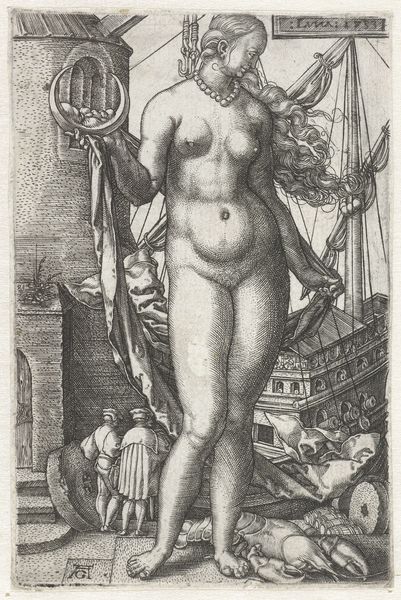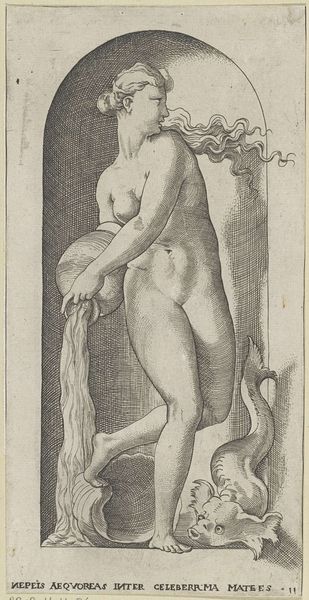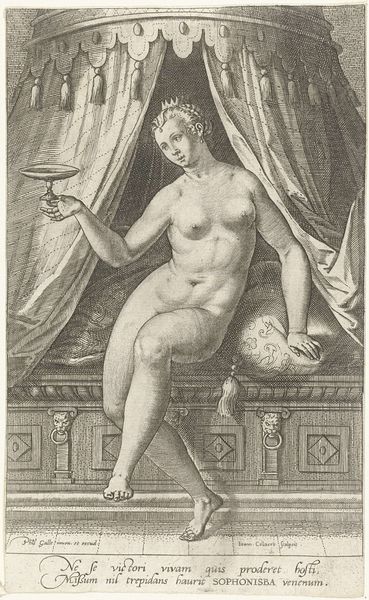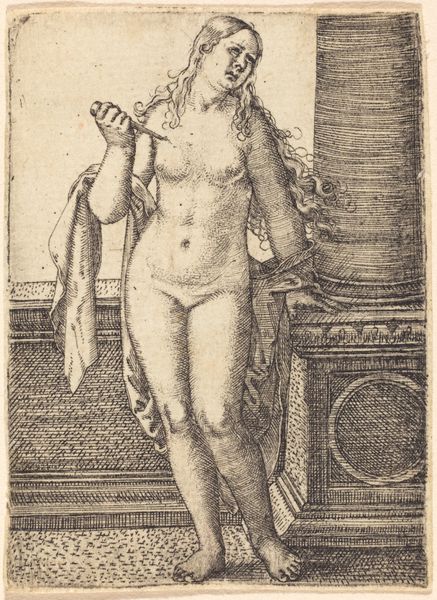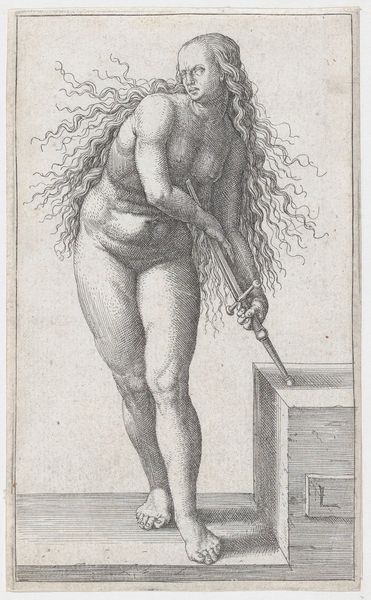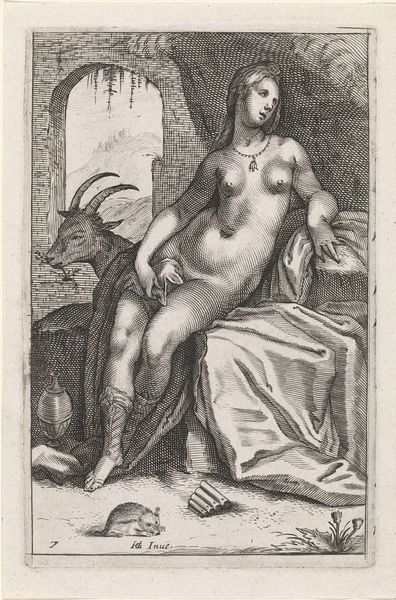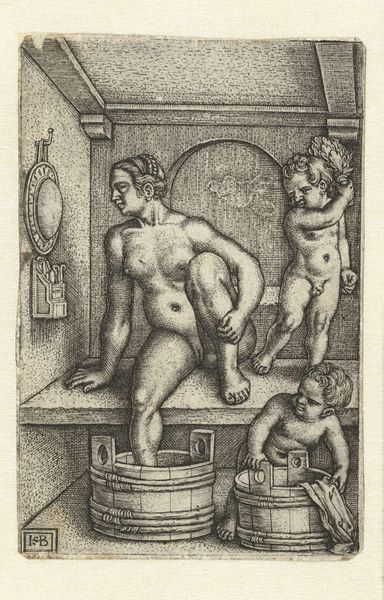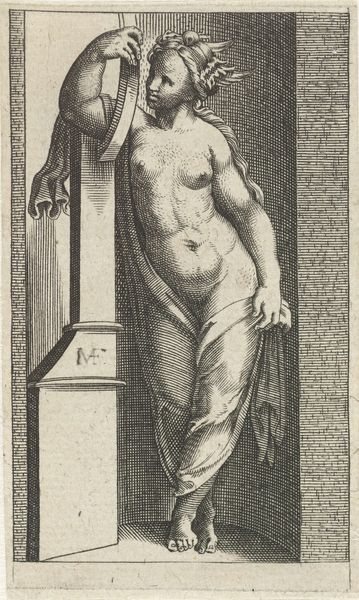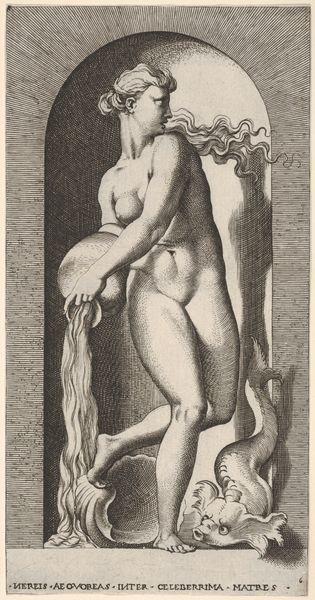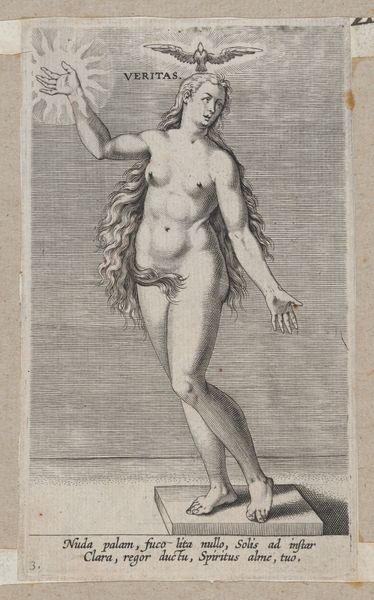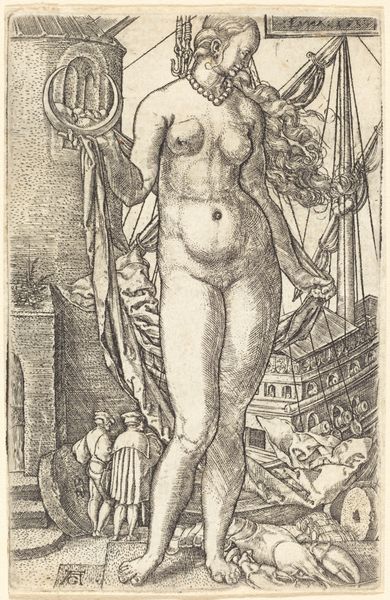
engraving
#
portrait
#
allegory
#
baroque
#
history-painting
#
nude
#
engraving
Dimensions: height 165 mm, width 105 mm
Copyright: Rijks Museum: Open Domain
Curator: Before us is "The Death of Cleopatra," an engraving crafted between 1576 and 1628 by Jan (II) Collaert, currently held at the Rijksmuseum. My immediate impression is one of serene power – almost paradoxical, given the subject matter. Editor: Indeed, there's a composure present that's quite striking. Given the narrative, I'd expect something more dramatic, but this rendering feels almost… curated, certainly fitting with power. I suppose that's intentional, speaking to how Cleopatra controlled her narrative even in death. Her power wasn't something easily taken. Curator: Exactly. Consider the snakes – potent symbols of both healing and destruction. Their presence transforms Cleopatra into a figure who isn't merely dying but undergoing a kind of apotheosis, choosing her destiny. It pulls at those ancient images of women and snakes, the deeply ingrained symbolism… Eve, temptresses, knowledge. Editor: Right, she's actively participating in her demise. Yet, even that agency has historical complexities. Was she choosing death or escaping Roman domination? Seen through a postcolonial lens, her suicide can be read as an ultimate act of resistance. Rome’s narrative always tries to rewrite history with men writing it down as truth, a propaganda by victor-ship that strips away the realities of power. This challenges it by embodying female strength even at life's ending. Curator: That ties into the baroque aesthetic— the emphasis isn't just on raw emotion but on the underlying message, on manipulating the viewer to understand deeper meanings beyond grief or despair. There's an orderliness in the composition that supports this. Even death serves a higher purpose, to underscore the transient nature of worldly power. This is still a period deeply invested in the didactic function of images. Editor: True. But who is that function serving? Consider how many depictions there are portraying powerful women of history dead versus those living and triumphant. Even in "choosing" death, Cleopatra becomes a cautionary tale in the grand narrative constructed by men that women in power are inevitably doomed. A story written to remind of a woman’s place in a patriarchy. Curator: An interesting contrast of ideas, in that case, and a point well taken. What I saw as agency could, from a different point of view, be seen as yet another version of the subjugation that all narratives put women through. Editor: This reminds us that every depiction is always a conversation and it matters deeply to constantly ask “by whom?” when seeing representations such as these and, moreover, who is remembered through art.
Comments
No comments
Be the first to comment and join the conversation on the ultimate creative platform.

